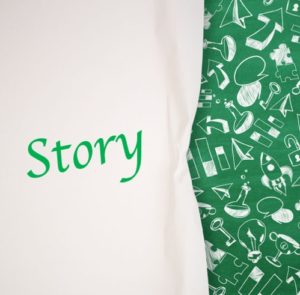By Dr. Ken Broda Bahm:

In the days leading up to trial, you wrestle with the task of creating an opening statement in a complex case. Of course, you remember the core advice from your very first trial advocacy class, but the sheer complexity at this stage seems to be an obstacle. “How do I even start to boil all of this down to a story?” The answer is that you’ve got the right idea, but you’re going about it at the wrong time. The act of developing that story should have begun long ago, and much earlier in the discovery process. If it had, there is a good chance that the pile that is “all of this” would be smaller and more focused on what matters most.
The best advice is to develop your story at the earliest possible opportunity. Naturally, that story will grow, change, and adapt as the case progresses, as you learn more, as fact and expert witnesses are deposed, and as motions are made and rulings are obtained. But having the story will be a guide at all of those phases. The story should act as a compass, and whatever advances your story is helpful, and whatever is tangential or irrelevant is best left out. This post focuses on five ways to start developing that story as early as possible.
1. Ask Your Client and Fact Witnesses to Tell It
The development of a story should begin in your first meeting with a client or potential client. An opening question like, “Tell me what is going on,” should help in framing out that narrative. It is likely to get more complex than this initial discussion, but don’t lose sight of the first and most basic explanation. As the case gains in complexity, the clients and the fact witnesses will remain vital resources in telling that story and keeping it grounded.
2. Ask Someone Who Doesn’t Know the Details
Find someone who has a knack for communication, give them a rough sketch of what you’re dealing with and ask them how they would boil it down. This can be a colleague or a consultant. As I have written before, you don’t need to overload that advisor with information. Give that person only a bare outline and leave out much of the detail, and that economy will help rather than hurt.
3. Fill in a Template for the Story
One technique I’ve also shared before is the idea of filling in a template for your story. Answering four simple questions can help boil the story down to its essence:
- Who?
- Did what?
- With what effect?
- And what unmet need?
This looks at the main characters (protagonist and antagonist), the central action and effect, and the remaining problem to be solved here in trial — all the main ingredients for a story.
4. Hold a Formal or Informal Focus Group
Humans are storytelling animals and will replace the detail you give them with a simpler version. So one technique is to find some humans, outline the case for them, and then talk to them. They’ll tell the story as they understand it back to you and to each other. Even if they miss some things or get other things wrong, the broad envelope they give to the story is worth paying attention to. This is a focus group, and whether it is done formally as a recruited research project or more informally as an ad hoc conversation, it can be a useful sounding board for finding a version of the story that helps you.
5. ‘Chunk’ Your Timeline
Chances are good that you’ll start developing the timeline early. But the timeline doesn’t create your narrative by itself. In order to move from “sequence” to “story,” think about the main “chunks” of your timeline. By breaking it into sections or chapters, you will start moving toward a meaningful story for jurors.
Instead of seeing the extended discovery period as just a time to accumulate information and to make motions, see it as a time to aim toward what you will ultimately want from a jury. It is never too soon to forecast what you will want to be telling jurors in opening and closing statements at trial. So the sooner you can lock into that story, the better.
_____
Other Posts on Story:
- Improve Your Storytelling: Seven Ways
- Refine Your ‘Good Company’ Story
- Tell It: The Top 10 Posts on Story